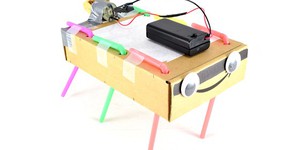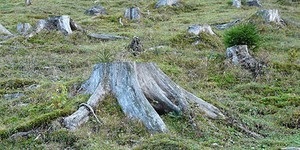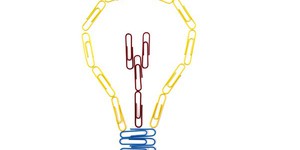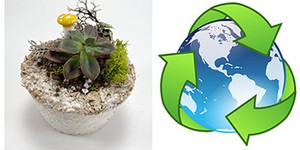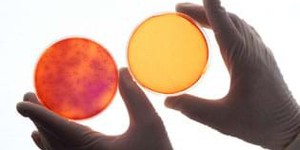Environmental Engineering Lesson Plans (5 results)
The human population on Earth is now more than 7.5 billion, and growing quickly. With more and more of us living an energy-intensive, modern lifestyle, the environmental stresses from human activity continue to increase. Greenhouse gases leading to global warming and fertilizer runoff resulting in marine "dead zones" are just two examples of large-scale environmental impacts from human activity. See how science, engineering and technology can help us take good care of our environment while still enjoying the comforts of a modern lifestyle.
|
Select a resource
Sort by
|
Lesson Plan
Grade: 9th-12th
Students investigate passive solar building design with a focus solely on heating. They learn how insulation, window placement, thermal mass, surface colors, and site orientation play important roles in passive solar heating. They use this information to design and build their own model houses, and test them for thermal gains and losses during a simulated day and night. Teams compare designs and make suggestions for improvements.Engineering Connection
Passive solar…
Read more
NGSS Performance Expectations:
Featured
Lesson Plan
Grade: 6th-8th
7 reviews
Junkbots are easy-to-build robots that you can make using a simple circuit and some recyclable materials. In this lesson, your students will learn about engineering design as they compete to build the fastest robot. No previous robotics experience is required!
Read more
NGSS Performance Expectations:
Lesson Plan
Grade: 6th-8th
2 reviews
Forests are the green lung of the Earth and home to millions of different plant, fungi, animal, and bacteria species. Unfortunately, today many forests are threatened by deforestation, which causes significant biodiversity loss. Ongoing reforestation efforts across the world intend to counteract the effects of deforestation. As planting trees by hand does not scale well, machines on the ground, as well as flying drones have been developed to help plant tree seedlings or seeds. In this lesson,…
Read more
NGSS Performance Expectations:
Lesson Plan
Grade: 3rd-8th
4 reviews
Coming up with new ideas is hard! How do engineers design new things or improve existing ones? Engineers and inventors use different brainstorming techniques to help them think outside the box and come up with new ideas. In this lesson plan, your students will practice brainstorming with a method called SCAMPER.
Read more
Lesson Plan
Grade: 9th-12th
1 review
Are your students passionate about the environment? Do they like to explore new ideas for more eco-friendly products? This lesson will give your students a chance to grow a product out of mycelium composite, a material that recently gained traction as an eco-friendly alternative for many plastics and foams. Students will analyze the impact of this product on the environment at every step of its life cycle, from raw material to the end of its life, and compare it to a plastic or cardboard…
Read more
NGSS Performance Expectations:
Lesson Plan
Grade: 9th-12th
A hypothetical scenario is introduced in which the class is asked to apply their understanding of the forces that drive natural selection to prepare a proposal along with an environmental consulting company to help clean up an area near their school that is contaminated with trichloroethylene (TCE). Students use the Avida-ED software application to test hypotheses for evolving (engineering) a strain of bacteria that can biodegrade TCE, resulting in a non-hazardous cleanup…
Read more
|
Explore Our Science Videos
Robotics Engineering Project: Use the Force! Push and Pull LEGO® Mindstorms® Robots
Making False-Color X-ray Images with NASA Files from the Chandra Observatory
Build an Infinity Mirror | Science Project




